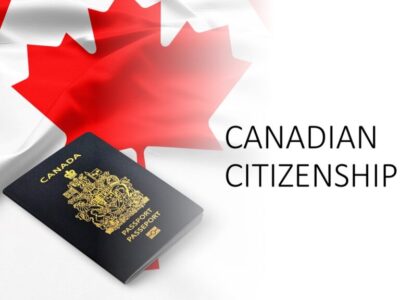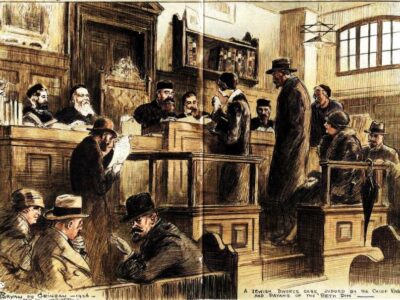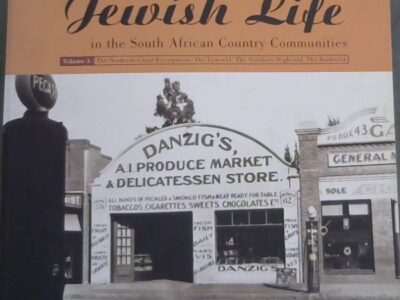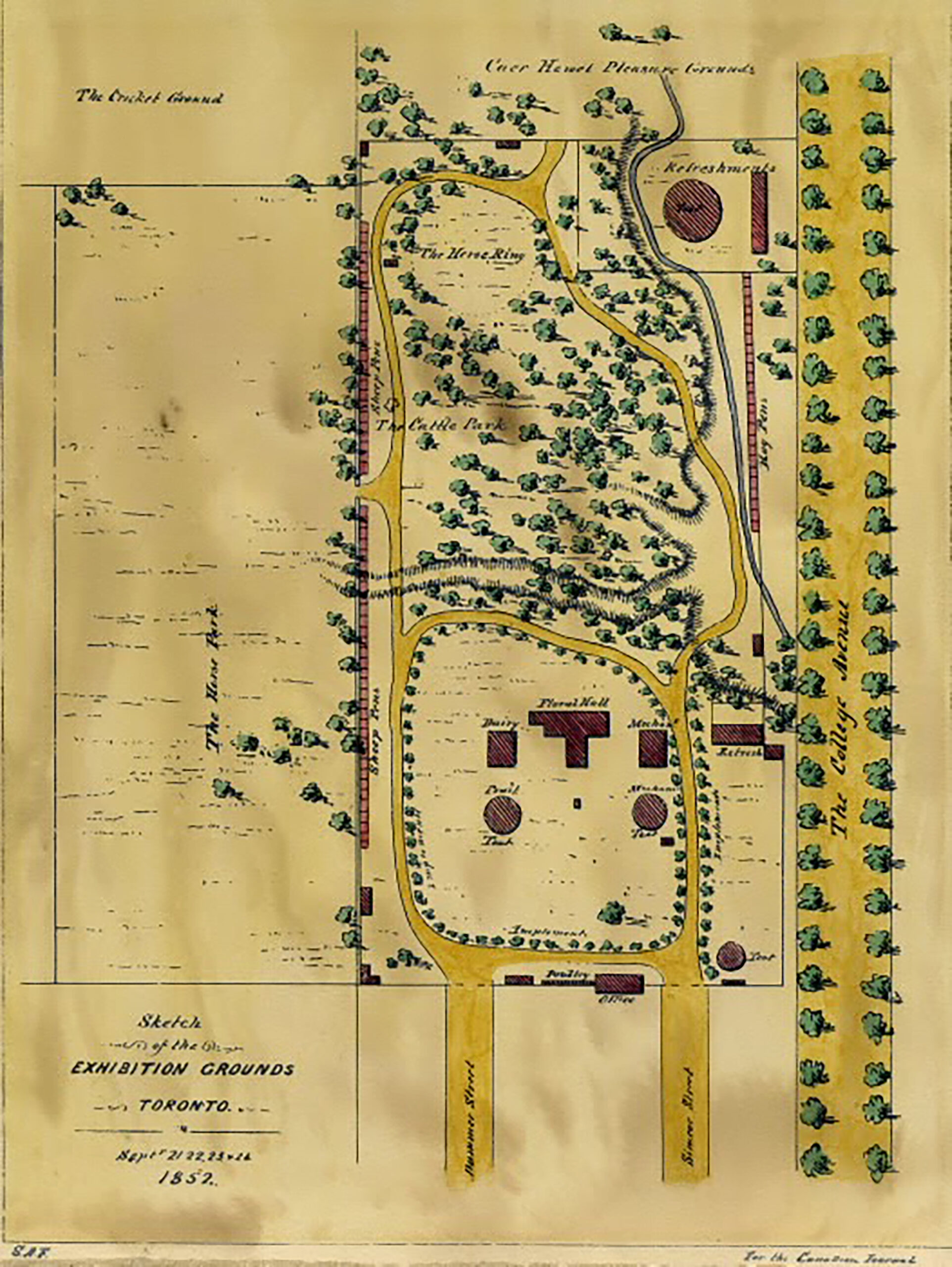
See map caption below
by William D. Reid
When Lord Durham, the Governor-General, refused to honor the contemplated autumn meet of the City of Toronto and York County Races of 1838 with his presence, the sponsors considered it advisable, for some unknown reason, to postpone the races altogether for the year. The author of the famous “Durham Report” stated he did not consider Upper Canada (Ontario) within his jurisdiction –Sir George Arthur being at that time Lieutenant Governor of Upper Canada. As a matter of fact, Lord Durham was in serious political difficulties, and in a nervous, run-down condition, so alarming his friends thought he would not live to see England again. Why Sir George Arthur was not asked to act as patron of the meet is an enigma.
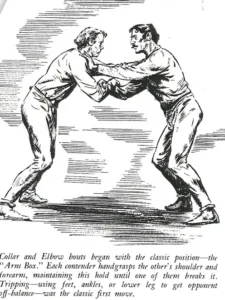 However, the “sports” of the locality, with that true British spirit, were far from being downcast. On the contrary, ignoring the rather unsettled condition of the district, the result of the aftermath of the Mackenzie Rebellion, they began casting around for an acceptable substitute.
However, the “sports” of the locality, with that true British spirit, were far from being downcast. On the contrary, ignoring the rather unsettled condition of the district, the result of the aftermath of the Mackenzie Rebellion, they began casting around for an acceptable substitute.
Someone, possibly one of the English officers of the 85th Regiment garrisoned in the City, suggested the idea of “a day’s amusement at Athletic Exercises,” at which prizes would be awarded to the successful competitors.
This suggestion was taken up with enthusiasm and, at a meeting convened early in September, it was decided that a series of athletic events, magnanimously termed the “Toronto Olympic Games,” should be held as soon as possible at the Caer Howell Pleasure Grounds, near what is now the south-west corner of College Street and University Avenue. The Toronto Patriot of September 18th noted that “These Games are now very popular over almost the whole of Great Britain, and were brought to perfection under the immediate eye and superintendence of the celebrated Sir Walter Scott and the Ettrick Shepherd (James Hogg), at the far-famed St Ronan’s Wells.”
The committee appointed at the meeting inserted a notice in the Toronto papers of the period. . . . [listing the names of committee members as follows:]
-
- The mayor of the City . . . John Powell, a son of Chief Justice William Dummer Powell.
- Captain Arthur, of the 4th, or King’s Own, Regiment, and Lieut. Domvile, of the 85th Regiment, were the aides de camp to Sir George Arthur, the Lieutenant Governor. Captain Arthur, later Col. Sir Frederick Leopold Arthur, was a son of Sir George Arthur. He married Elizabeth, daughter of the 10th. Earl of Kinnoull, and died 1878.
- Compton Charles Donvile, the eldest son of Sir Compton Pocklington Domvile, of Santry House, Dublin, married Isabella Maria, daughter of Sir George Arthur. He died at Nice, France, in March, 1852.
- John Barwick, a stock and produce broker, was one of the first directors of the Toronto Club, and also a director of the Bank of Upper Canada.
- Charles Wallace Heath, a barrister, was one of the leading sportsmen of the day, having been one of the stewards of a race meet hold the year previous at “Mr. Scarlett’s Simeoe Chace Course,” which was situated north of Dundas Street between the Weston Road and the woods on the western bank of the Humber.
- Arthur, Lieut. Domvile, and Charles W. Heath, were also early members of the Military Tandem Club, organized in 1840 for the purpose of “enjoying sleighing and encouraging and developing the accomplishment of tandem driving by its members.”
- William Campbell kept the North American Hotel, later Newbigging House, at 32 Front Street.
- John Maitland, a distiller, was a member of the family from which the old Maitland Wharf at the foot of Church Street received its name. In 1839 Maitland, who was also secretary of the City of Toronto and York County Races, brought a charge of misappropriation of certain funds against Major T. A. Magrath, which caused much agitation amongst the sporting fraternity at that time and resulted in the temporary unpopularity of horse racing in Toronto.
The use of the word “Ordinary” as a noun in the last paragraph of the notice will undoubtedly cause some to wonder. In this sense it means a dinner at which meals are furnished at a fixed price, and is now practically obsolete, except in certain parts of England. The blue-bonnets mentioned as prizes were probably the round, flat, blue bonnets of the Scots.
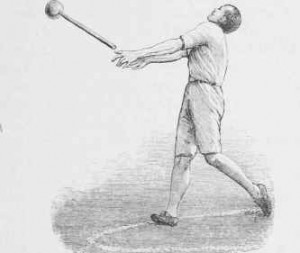 The appellation, the “Toronto Olympic Games,” no doubt sounds rather lofty to the present day sportsman, who has come to regard the term “Olympic Games” in its now popular meaning, a meeting of nations. Toronto at that time consisted of but 12,500 inhabitants and the games could not have drawn as many competitors as some of the Y.M.C.A. outdoor twilight athletic meets held in the City in the present era. To these early Torontonians, however, it was really an “Olympic” type meet, as some of the games, such as rifle shooting and wrestling, are not included in our athletic meets of to-day, excepting the British Empire Games and the Olympiad. The list of events is much similar to that held in 1807 in connection with an athletic society called the Necton Guild, at Necton, Norfolk, England, which was one of the first of the modern athletic meetings, and was more than likely drawn up by one of the officers of the 85th Regiment on the committee.
The appellation, the “Toronto Olympic Games,” no doubt sounds rather lofty to the present day sportsman, who has come to regard the term “Olympic Games” in its now popular meaning, a meeting of nations. Toronto at that time consisted of but 12,500 inhabitants and the games could not have drawn as many competitors as some of the Y.M.C.A. outdoor twilight athletic meets held in the City in the present era. To these early Torontonians, however, it was really an “Olympic” type meet, as some of the games, such as rifle shooting and wrestling, are not included in our athletic meets of to-day, excepting the British Empire Games and the Olympiad. The list of events is much similar to that held in 1807 in connection with an athletic society called the Necton Guild, at Necton, Norfolk, England, which was one of the first of the modern athletic meetings, and was more than likely drawn up by one of the officers of the 85th Regiment on the committee.
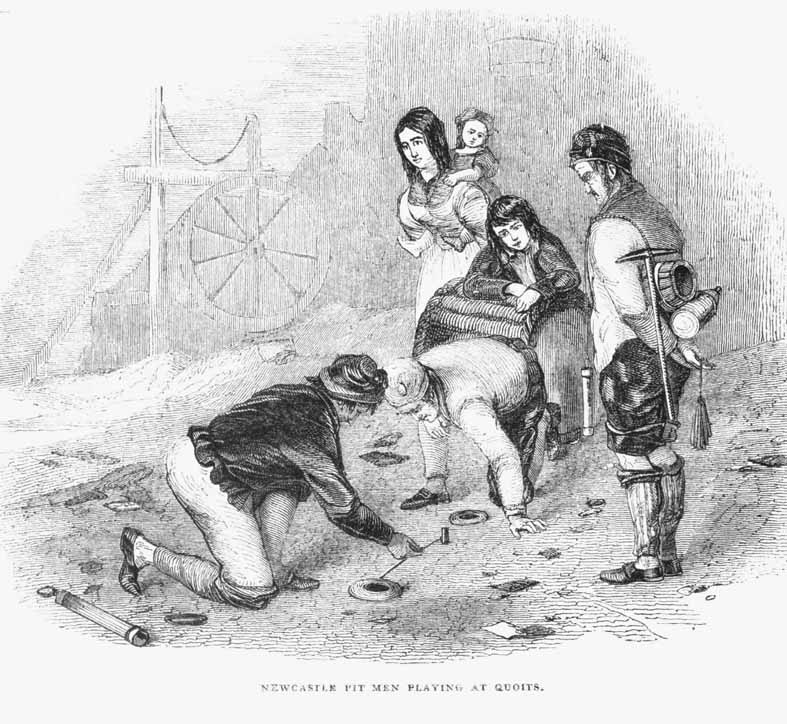 The Patriot again commented upon these games in its issue of October 2nd., 1888. It stated “we are glad to see that Caer Howell Grounds are about to be made the scene of such manly sports, as have been time out of mind the delight of the British people.” The editor, Thomas Dalton, remarked that he hoped to see “a goodly muster, both of players and lookers on.”
The Patriot again commented upon these games in its issue of October 2nd., 1888. It stated “we are glad to see that Caer Howell Grounds are about to be made the scene of such manly sports, as have been time out of mind the delight of the British people.” The editor, Thomas Dalton, remarked that he hoped to see “a goodly muster, both of players and lookers on.”
This excellent substitute for the “Sport of Kings” was evidently the success Editor Dalton hoped it would be, for extra events were added and it was spread over two days, the 17th and 18th of October, instead of one day, the 17th, as originally printed in the notice. For some unknown reason, the steeplechase races do not seem to have been held.
The winners of the different events and the prizes were as follows:
-
- First short foot race (medal): John Macnab, Esquesing.
- Second short foot race (blue bonnet) : Private Bradley, 85th Regt.
- Long foot race (medal): Henry Henry, Toronto.
- Running hop, step and leap (medal): Joseph Courtney, Toronto.
- Running high leap (medal): John Overland, Toronto.
- Standing hop, step and leap (blue bonnet): John Overland, Toronto.
- First sack race (money): Private Murnley, 85th Regt.
- Second sack race (money): Joseph Courtney, Toronto.
- First putting the ball (medal): Robert Sullivan, Toronto.
- Second putting the ball (medal): Sgt. James McAlhaney, 85th Regt.
- Throwing the hammer (medal): Charles Maitland, Toronto.
- Wrestling – collar and elbow practice: Resulted in a draw between Privates Murnley and Perry of the 85th Regiment, who received the price of a medal.
- Back-hold wrestling (blue bonnet): Henry Geddes, Toronto.
- Quoiting (medal): John Muir, Scarborough.
- Rifle Shooting (medal): Mr. Fairbanks, Toronto.
- Match running hop, step and leap: Sgt. McAlhaney, 85th Regt., defeated John Overland, Toronto.
John Muir, of Scarborough, the winner of the quoiting, was the father of Alexander Muir, composer of “The Maple Leaf.” Quoiting was also one of the favourite pastimes of the poet. In September, 1875, at Newmarket, he defeated a Mr. Dobson, of Barrie, for the “Dominion Quoit Championship” by the score of 61 to 36. Levi Fairbanks lived on Church Street, but later moved to Yorkville. He was a watchmaker and gunsmith.
So passed into history the first organized athletic meet ever held in Toronto, and possibly Ontario (then Upper Canada) , the credit for which, indirectly, should go to Lord Durham. For, had he not refused to patronize the horse races, the local sportsmen would quite likely never have given Toronto its “Olympic Games” as a substitute. ♦

